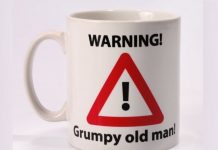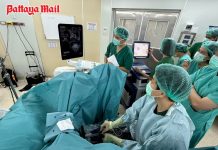We are still in October, and this is Breast Cancer Awareness month, and in Pattaya, the Hard Rock Hotel and Hard Rock Cafe help promote this through their “Pinktober” programs.
Breast cancer is an emotive subject, and unfortunately it then becomes a very popular subject for the ‘pulp’ press. The stories generally run as the “I got breast cancer the day after my mammogram” shockers, or the “I had my breasts cut off because my family has the cancer genes.” All these are guaranteed to panic the female half of the population and send readership numbers up, which is the name of the game. Nothing even vaguely related to dissemination of the truth. This article is hopefully going to redress the situation. And sorry Mr. Editor, it won’t boost the circulation figures this week either.
Ladies, let me assure you that breast cancer is well understood, and the results are not as the pulp papers would have you believe. Unfortunately, the cancer detection story is one that suffers from the problems of being an inexact science. Since we can put men on the moon, clone sheep (and even cattle in Korat) and other incredible facts, we should then be able to diagnose human conditions with pin-point accuracy. Wrong! The state of development in Medicine is not so cut and dried.
Diagnosis and detection are “real time” arts, not sciences, even though we would like them to be. Sure, we use “science” as a tool, but that is all it is. A tool to help us see the problem. Just like we can use a telescope to see things at a distance – even if we can’t see the object with unaided vision, that doesn’t mean to say it isn’t there.
There has been a bit of that thinking with Mammograms of late. A lady has three annual clear Mammograms and then finds she has advanced breast cancer during year number four. Was the testing useless? Should we just drop mammograms altogether?
I ask you to look at the “real time” situation. So today cancer was found. The most important question is when did it start to grow? This week, this month, this year? The answer depends upon the type of the cancer. Some fast growing cancers would be impossible to pick up, even if the person had monthly mammograms. However, the slow growing variety can be picked up years ahead. Unfortunately mammography cannot be a 100 percent indicator either – medical science is not that good – yet. But repeated mammograms is still one of the best diagnostic procedures we have. And it is better than nothing.
Likewise, Breast Self Examination (BSE) has its detractors as well as its proponents. Sure, a lot depends upon how well the woman carries out this self testing, but again, surely it is better to look than to carry on in blissful innocence?
I do not believe the doomsayers who would tell you that the outcome is just the same. Breast cancer is like all cancers – the sooner you find it, the sooner you can deal with it and the earlier treatment is administered, the better the outcome. In fact, did you know that studies from the American National Cancer Institute show that 96 percent of women whose breast cancer is detected are still alive five or more years after treatment? This is called a 96 percent five year survival rate, one of the ways we measure the severity of life threatening cancers. If the five year survival rate was only 10 percent – in other words, after five years only 10 percent were still alive, then I would also probably feel that predictive testing was not all that worthwhile. But it is not that bleak an outcome in this case – 96 percent are still alive and many go on for many, many years.
Finally, just because there is the “cancer gene” in your family, this does not mean that you are going to get breast cancer. It just means there is a “tendency” for the women in that family to develop breast cancer.
Ladies, talk with your doctor regarding breast screening, and ignore sensationalism in the popular press!




